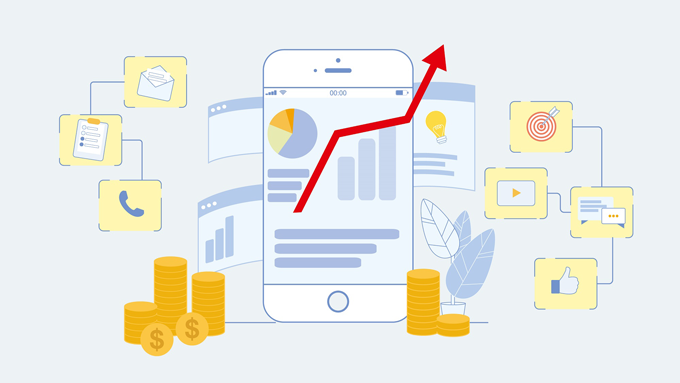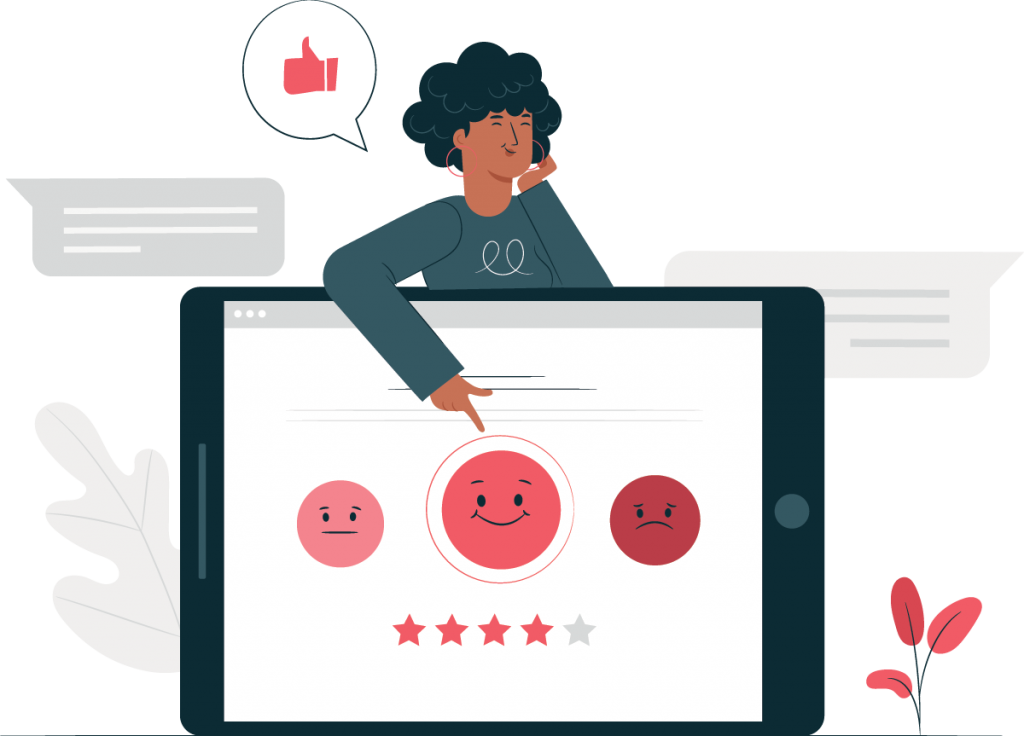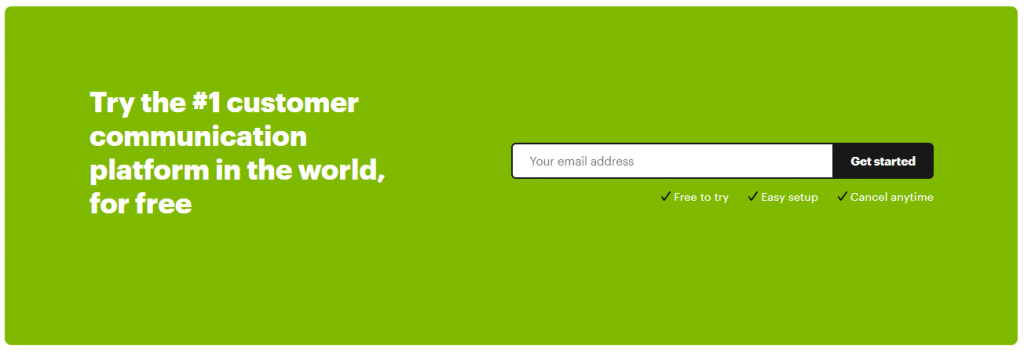Customer engagement has become an extremely important concept nowadays, as customers have a lot of choices and companies invest more resources to attract customers on their side. Despite that customer satisfaction and customer loyalty have become key elements for companies to be successful and they invest more in customer interactions and delivering great customer service.
Do you think you should focus on customer engagement and making loyal customers for your company in order to be successful on the market? I definitely think it’s worth doing so, because it will give you a competitive advantage and long term relationship with your customers.
In this article, I will reveal the main concept of customer engagement and also some of the best metrics you can use to achieve success in your company.
Let me first start with what customer engagement is!
What is customer engagement
Customer Engagement is the emotional connection between a customer and a brand. It has been proven that highly engaged customers would buy more, promote more, and be loyal. In this sense, providing a great customer experience would be essential in your customer engagement strategy.
Research made by Gallup shows that fully-engaged customers represent 23% more revenue than the average. This means that if you don’t have a good customer engagement strategy, you would miss great opportunities to interact with your customers. Customer engagement is different across industries and one should show empathy, simplicity, clarity and a great attitude to customers in order to achieve it.
There have been many examples of customer engagement that can be used for a strategy. A lot of companies use for example responsive social media agents, personalized discounts, offers and other things to provide high quality service and inspire customer loyalty.

One of the most important things here is that you should have good insights in your customers and get the customer feedback, so that you can make the best strategy out of it.
Why you should care about customer engagement
There are a lot of platforms today like Bigcommerce, Shopify, Wix, where one can easily start a small business. Regarding this, the eCommerce world has become more crowded and there has been a large focus on clicks, engagement, conversions, and acquisition costs.
From a business perspective, there are three main strategies you should keep in mind if you want to grow your business with success.
They are as follows:
- Customer Acquisition
- Customer Engagement
- Customer Retention
These strategies, however, are not enough for business sustainability just by themselves. That means that you should find ways to engage with your customers during purchases, because this will strengthen their emotional connection to your brand. This will help you retain customers you already have while enlarging your customer base.
Some studies have shown that up to 2/3 of a brand’s profits may be expected after effective customer engagement.
How to calculate customer engagement
By mentioning calculating customer engagement, I will refer to the Customer engagement score (CES) or engagement score. This is a single quantitative metric that evaluates customer engagement and free trial prospects. Customer Engagement Score is one of the key metrics for online businesses, particularly software-as-a-service (SaaS) companies.

Calculating the CES score can be relatively complex and requires a lot of factors to get the precise result. From this point of view it can be divided into three steps:
Step 1
This is considered to be the most critical step. At this stage you should assess the values and benefits that your products and services deliver to customers. When you know them, your company can identify the specific events that enable tracking such benefits. A social media company for example may track how many times customers use their online messaging system.
Step 2
When you have identified the benefits of your product or service, as well as the tracking events, you should assign a value to each event. As a general rule the higher the higher weight, the higher the benefit.
Step 3
The general formula for calculating Customer Engagement Score (CES) is as follows:
CES = W1,N1+ W2,N2……+Wt,Nt
Where:
- Wt – the weight of a random event
- Nt – the number of occurrences of a random event
There are cases where the process of calculating CES is automated. I mean there are many customer pralforms, that could offer calculation of CES. They can also help you identify customers, who are close to churn, identify the most engaged customers and where there is a need for product training.
Purchase frequency (PF)
When you search for ways to grow profits it’s good to start with retention metrics. Before trying something new, you would basically want to know how to calculate how well you are doing at the moment. This will allow you to have a benchmark that you will be able to compare future performance.
By this you can analyze the results of your efforts and it can lead to extremely valuable insights with metrics like Purchase Frequency.
Calculating Purchase Frequency
Purchase Frequency is the metric that calculates the average number of times a customer makes a purchase within a specific time. This gives you insights of how to structure your marketing best to suit the buying behavior of your customers.
When knowing this is useful, it is also important to use this number to calculate the time between purchases.
The formula to calculate PF is as follows:
PF = Number of Orders (365 days) / Number of Unique Customers (365 days)
Purchase Frequency is a metric that can be used in different ways if you change the time frame. I would recommend looking at data for a one year period, but you can use whatever time frame you would like. It is important here to include “Unique Purchases” in order to avoid duplicate purchases in your calculation.
Average order value (AOV)
This represents the average amount a customer spends when they make a purchase.
You can calculate it by using the following formula:
Total revenue (last 365 days) / Total number of orders placed in the last 365 days
This is important, because this number will tell you how much an average customer spends per purchase when they shop with your company. As a general rule repeat customers spend up to 7 times more that the one-time purchase counterparts. So this is an important metric to understand.
Repeat purchase rate (RPR)
This metric represents the percentage of customers who’ve made more than one purchase at your store within a specific period of time.
You can calculate it by the following formula:
RPR = number of customers that bought more than once / the total number of customers.
This is important because your repeat purchase rate gives you a clearer snapshot of the effectiveness of your entire retention strategy. This is because it tells you how many customers are engaged enough to make more than one purchase from your store. When you have a good understanding of your customer engagement baseline, you can start thinking of ways to improve it.
Customer Engagement Metrics
I will now show you some of the most important metrics you need to have in mind while measuring customer engagement. They will help you to have good customer insights in real time and other time periods, whey you use them with your analytics tools.

Likes, Comments and Shares on Social Media Platforms
A lot of brands use social media to promote their products and services. The response that your posts receive can be a good indicator of the success of your customer engagement strategy. Likes, comments and shares on social media posts aren’t just numbers, but they show you what the customer feels. This can help you estimate the overall sentiment around your brand.
If a customer likes your product, they may leave a comment asking for price or some other features. If they like something you posted, they can also share it on their timeline. That’s the kind of response from an audience telling you if they’re interested.
You should also keep in mind that the comments you receive also make a difference, not just their number. If you get positive comments, you should consider it as a good customer feedback and a good sign for your customer engagement strategy. You can also use those metrics to compare your engagement with your competitors.
Until recently the number of followers was also an important metric for measuring engagement, but with the rise of fake followers, it’s no longer considered a deciding metric.
App Downloads and Usage
Mobile commerce has been booming. According to some researchers, retail sales via smartphones in the US are projected to grow at a compound annual growth rate (CAGR) of 18% until 2023.
Mobile commerce has been a crucial medium for shoppers. That’s why mobile phones and tablets should be a part of your marketing and engagement strategy. If you are not sure how to measure customer engagement for mobile, you should start keeping a tab on the number of app downloads you have.
Many ecommerce stores and other businesses have websites and mobile apps today. As a business owner you should focus on encouraging your customers to download your app. If customers download your app, you become more easily accessible and can send them pop-up notifications and inform them about your latest products. This step can help you retain your customers, engage them, and make them loyal.
Your mobile app can actually give you a competitive advantage over your competitors. OK, let’s say that you get enough customers to download your app, so what’s next? You know the number of app downloads, but there is more to do.
One of the best ways to measure customer engagement is to check how often your customers use your app. In other words it does not make sense if your customers download your app, but they don’t use it. Therefore, one of the goals of improving customer engagement strategy should be to get your customers to use your app.
To keep a track of your customers’ app usage, you can utilize different mobile analytics tools. They will give you statistics when your customers opened your app, which product pages they viewed, and muchmore.
Bounce Rate
Bounce rate is an important metric for websites and you should not neglect it. It gives you information when customers are bouncing off from your website, which shows how engaging your web pages are for your customers.
If your customers are highly engaged, they would probably read multiple articles on your website. This would lower your bounce rate and this is what you in most cases should aim for.
Here is a simple way of measuring this metric According to Google:
Bounce Rate = Total number of single-page sessions / Number of total website sessions
Single-page sessions are the ones that don’t show any subsequent hits after the first one. These page sessions will show a duration of 0 seconds. Remember, that a high bounce rate isn’t always bad. It will be bad if the success of your marketing strategy depends a lot on your visitors checking more than one page.
Your home page for example acts like a gateway for the rest of your website, but it can keep your customer engagement rate low if it does not send customers to other pages.
In other words, If your customers check your products after viewing your homepage, it’s not good for your business. On the other hand, if you own a single-page website, then you should not be focused on the bounce rate, but on other things on your webpage.
Event Participation
Many big companies regularly organize events to launch new products and improve their brand visibility. This is not only a great way to build your brand’s reputation, but it is also one of the best metrics to consider for measuring customer engagement.
Whether it is a professional conference or a casual event, counting the number of sign-ups will show you if your customers are engaged or not. If you keep receiving registrations quickly, you should be very happy, because this means that your customer engagement strategy is on its way to be successful.
Time on Site
Another great metric for measuring the success of your customer engagement strategy is the time spent by visitors on your website. If people spend more time on your website, this will also positively impact your Search Engine Optimisation.
In addition, you will also increase the chances of visitors to purchase from you, as they will be browsing more through your products and services. This is why your marketing strategy should definitely include an engagement metric like this one.
Frequency of Return Users
If people are buying from you and then not returning for a long time, there could be a reason to worry.
This is why you should keep a track on metrics like the frequency of return users. By doing this, you will know how many of your customers are returning to your brand, purchase again, and how frequently they do that.
The shorter the duration, the better your frequency of return users, which in turn means that your customer engagement is high.
If however your number of return users is low and their frequency is also low, you may need to look into your product or marketing strategies.
Pages Per Session
Pages per session is also an important metric in regards to measuring customer engagement. It shows you the average number of pages your customers have browsed through. It can indicate how well the website’s content matches your customers’ needs and also gives you an idea what their interests are.
If this number is high It will show that the customers are not just interested in a single page but your entire website. This will also help you with your website’s Search Engine Optimisation and rankings.
Monthly Active Users
While you can check daily active users, monthly active users can help you understand your customer engagement much better.
By knowing how many customers are actively visiting your website on a monthly basis,, you can figure out how well your products resonate with them. Ideally, you should compare your daily, weekly and monthly active users. This will give you a much larger picture if people are sticking with your website or not returning.
Custom Events
You should consider which metrics are unique and important to your products or services. If you are an ecommerce website, you could for example measure your repeat purchase rate. This will tell you if someone will come back and order the same product or another product from your site.
You can also look at how often people request to return a product and ask for a refund. Think about which event or feature could be a good indicator of customer engagement for your website. This will help you in measuring how engaged your customers are.

Conclusion
This article is about customer engagement and why it is so important for your company.
I revealed how customer engagement is calculated along with purchase frequency (PF), average order value (AOV) and repeat purchase rate (RPR).
This however would not be as efficient if you don’t know some of the most important metrics you should keep track on while measuring the customer engagement strategy for your company.
In summary those metrics are:
- Likes
- comments and shares on social networks
- app downloads
- bounce rate
- event participation
- time on site
- frequency of return users
- pages per session
- monthly active users
- custom events
By knowing them you can tailor your own customer engagement strategy, so that you can become a leader in your niche.
Keep in mind that you need to put a large focus on your value proposition and how it matches customers’ needs. This also relates to building a personal connection with your customers, so that they can remember you and be loyal.
I hope I could give you a good overview of what customer engagement is and why you should put special care to it.
Finally, I would like to thank you for your time in reading this article and I wish you all the best with your marketing strategy.




